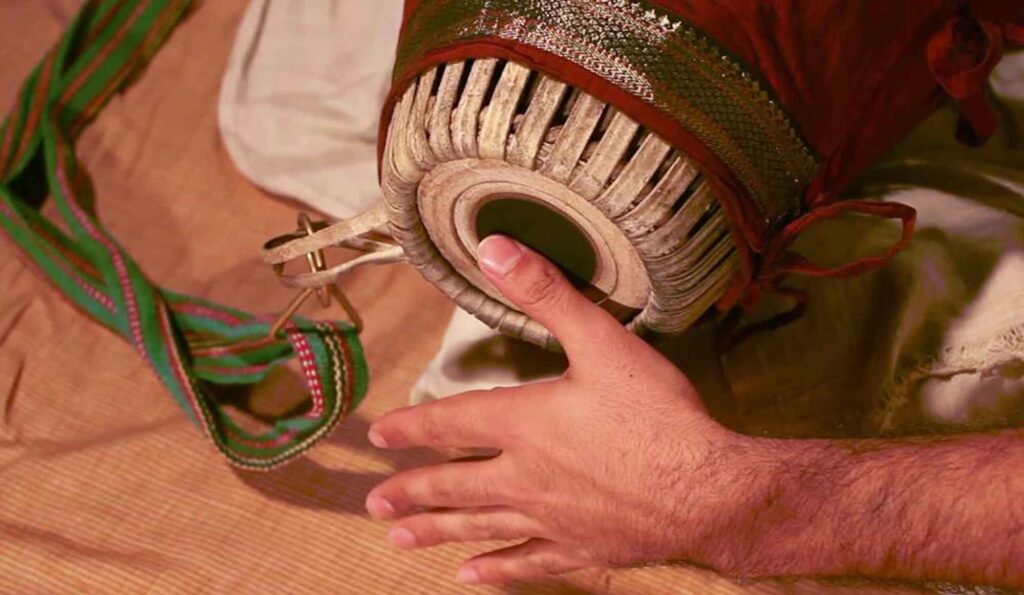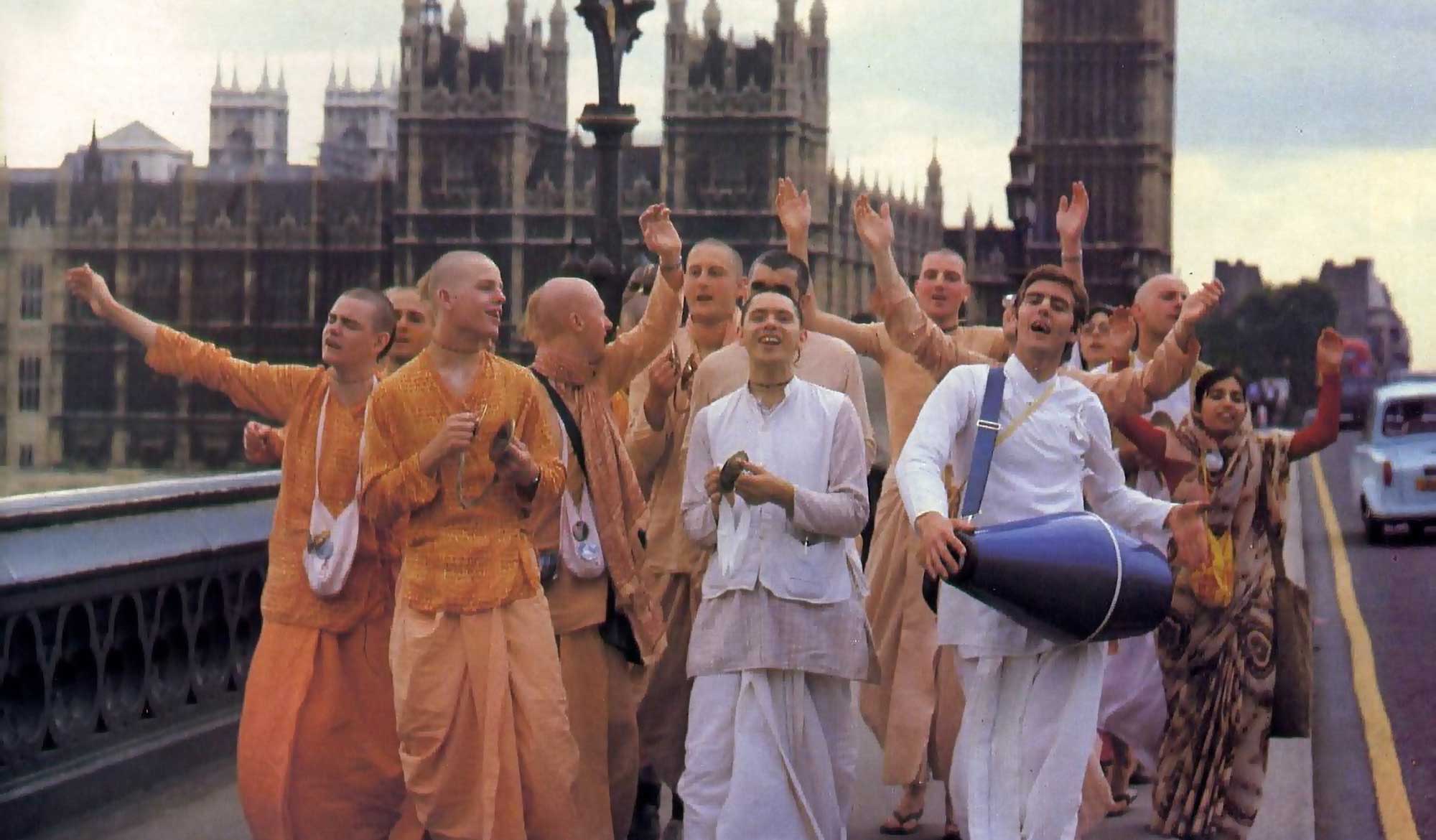Overview
In this short article ‘Śrīdhāma Māyāpura’ published in Sajjana Toṣaṇī Vol.5 issue 12 in 1893, Bhaktivinoda Ṭhākura gives evidence from Bhakti Ratnākara to prove that Māyāpura is the birthplace of Śrī Caitanya, and invites the people of Bengal to attend the annual Gaura Pūrṇīmā festival that year.
(translated by Swami B.V. Giri)
Māyāpure maheśāni bhaviṣyāmi śacī-sutaḥ (‘O Great Goddess, in the future, He will appear as the Son of Śacī in Māyāpura.”) – there are many such statements in the Tantra and Purāṇas. Everyone asks where is the supreme dhāma, Māyāpura. It is also said in the śāstra, māyāpure navadvīpe vāram ekaṁ śacī-sutaḥ (‘He will appear in full as the Son of Śacī in Māyāpura within Navadvīpa.”). Now it seems certain that Śrī Māyāpura is within Śrī Navadvīpa. The ancient Vaiṣṇavas have written:
navadvīpa madhye māyāpura nāme sthāna
yathā janmalena gaura-candra bhagavāna
yaiche vṛndāvane yogapīṭha sumadhura
taiche navadvīpe yogapīṭha māyāpura
(“Within Navadvīpa is a place called Māyāpura. It is here that Bhagavāṇ Gaura-candra took birth. Just as there is the most sublime yogapīṭḥa in Vṛndāvana, so also Mayapura is the yogapīṭḥa of Navadvīpa.” – Bhakti Ratnākara 12.83-84)
gaṅgā pūrva paścima tīrete dvīpa naya
pūrve antardvīpa śrī-sīmanta-dvīpa haya
godruma-dvīpa u śrī-madhyadvīpa catuṣṭaya
koladvīpa ṛtu jahnu modruma āra
rudradvīpa ei pañca paścime pracāra
(“Situated on the eastern and western shores of the Gaṅgā there are nine islands. In the east there are four – Antardvīpa, Sīmantadvīpa Godrumadvīpa and Madhyadvīpa. Koladvīpa, Ṛtudvīpa, Jahnudvīpa, Modrumadvīpa and Rudradvīpa are the five that are on the western bank.” – Bhakti Ratnākara 12.50-52)
In Śrī Bhakti-Ratnākara it is found that Antardvīpa is on the eastern side of the Gaṅgā, and Śrī Māyāpura is in Antardvīpa. From Antardvīpa one can see Śrī Suvarṇa-vihāra.
According to popular tradition, Dewan Ganga Govinda Singh Mahāśaya had previously designated some land as Māyāpura. Several selfless devotees have given much evidence to identify a specific piece of land with spiritual attributes, serving as a forest of tulasī, as the birthplace of Śrī Śrī Mahāprabhu. Some houses have been built on that land. There, both the Deities of Śrī Śrī Gaura-kiśora and Śrī Śrī Viṣṇupriyā who is the personification of bhakti, cit-śakti and bhū-śakti, have been installed there. By performing this activity, the devotee community is submerged in bliss, chanting, “Jaya! Jaya!”
Surprisingly, what Śrī Nityānanda Prabhu had said (that four-hundred years after the Lord’s birth, the Deity of Śrī Gaurāṅga would reappear in the temple of Śrī Jagannātha Miṣra) came true. O devotees! O mahā-māhopādhyāyas! O rich gentlemen! O fortunate residents of Bengal! Satisfy your eyes and make your birth successful by taking darśana of these Deities that charm the entire world on the 7th of Caitra. A lunar eclipse on Phalguṇa Pūrṇimā did not occur again after the birth of the Lord. This time it is happening four-hundred and eight years later. You should understand that this is due to the manifestation of the Deities in Śrī Māyāpura.
During this mahā-yoga*, one cannot determine how many results are bestowed on a jīva who bathes in the Gaṅgā at Śrī Gaṅgā-nagara ghāṭa and takes darśana of the Deities at the Mahā-Yogapīṭha. For those who observe this date and take darśana at the Yogapīṭha and bathe at Gaṅgā-nagara, even four-headed Brahmā offers them jaya-dhvani. Oh! All the devotees of Śrī Navadvīpa-maṇḍala are dancing in ecstasy longing for the manifestation of Śrī Gaurāṅga. So there will be unprecedented kīrtana and various festivals on the other side of Gaṅgā. I see various preparations with different musical instruments in many places. Oh! What are the glories in regards to the manifestation of Śrī Māyāpura?
* Translators Note: In astrology, a mahā-yoga is a powerful combination of planets during someone’s birth.













